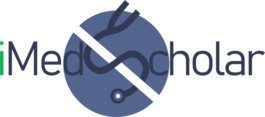Features:
- Endocrine gland
- Consists of right and left lobe connected by an isthmus
Functions:
- Regulates basal metabolic rate
- Stimulates psychic and somatic growth
- Regulates calcium metabolism.
Being one of the important glands in our body, we have to know everything about this gland in detail.
We are going to cover the following:
- Situation and Extent
- Dimensions and Weight
- Capsules of thyroid (imp)
- Parts and relations (imp)
- Arterial supply (imp)
- Venous Drainage
- Histology (imp)
- Development (imp)
- Clinical Anatomy (imp)
So here we are going to talk about the situation and extent of different parts of the thyroid.
As a whole gland it lies against C5-C7 and T1
Each lobe extends from middle of thyroid cartilage to fourth or fifth tracheal ring
Isthmus (part joining the lobes) extends from second to fourth tracheal ring
Gland: C5-C7 T1
Each lobe: 4 (5-1 )- 5 (7-2) tracheal ring
Isthmus: 2 (5-3)- 4 (7-3) tracheal ring
TABLE OF 5
Each lobe: 5 x 2.5 x 2.5 cm
Isthmus: 1.2 x 1.2
Weight: 25 g
True Capsule: Peripheral Condensation of connective tissue of the gland
False Capsule: Derived from pretracheal fascia of deep cervical fascia. Forms a suspensory ligament of Berry connecting the lobe to cricoid cartilage.
Thyroid has two lobes and isthmus.
Lobes are conical having:
- Apex
- Base
- Three surfaces : Lateral Medial Posterolateral
- Two borders: Anterior and Posterior
(imagine a cone to remember the parts, every cone has a apex, base, three surfaces and two borders)
APEX :(AV)
- Superior thyroid artery (at apex so superior)
- External laryngeal nerve
BASE:(AV)
- Inferior Thyroid Artery (at base so inferior)
- Recurrent laryngeal nerve
SURFACES:
LATERAL SURFACE:(remember LM i.e. lat. Surface is related to muscles)
- The sternohyoid(S-H)
- The superior belly of omohyoid(SOBO)
- The sternothyroid(S-T)
- The anterior border of sternocleidomastoid(SAB)
(SAB SOBO GIRLS ARE S-H-T (SPELL AS SHIT))
MEDIAL SURFACE:Rule of 2
2 Tubes: Trachea and oesophagus (the only tubes in the neck that can be related to thyroid)
2 Muscles: Inferior constrictor and Cricothyroid(I-C-C-T)
2 Nerves: External laryngeal and Recurrent Laryngeal (the only two nerves we studied in relations of apex and base respectively)
POSTEROLATERAL SURFACE:
- Carotid sheath
- Common Carotid artery
(common carrots arranged in a sheath on a PLATE)
BORDERS:
ANTERIOR BORDER(thin):
- Anterior branch of superior thyroid artery(recall apex having sup. Thyroid artery and from there it gives this branch along ant. border)
POSTERIOR BORDER (thick):
- Inferior thyroid artery(like ant. Border is related to sup. Thyroid artery post. Border is to inferior thyroid artery)
- Anastomosis between posterior branch of superior and ascending branch of inferior thyroid artery.(STAP B was A BIT Angry)
- Parathyroid gland (we all knw post part of thyroid gland has parathyroid)
- Thoracic duct only on left side.(TDL)
(In time we knew STAP B was A BIT Angry as he did not get PG in TDL college PunjanB ) PB signifies posterior border
ISTHMUS has:
(Isthmus sits behind thyroid TAPS and SITS)
- Two surfaces: Anterior and Posterior (TAP)
- Two borders: Superior and Inferior(SIT)
ANTERIOR SURFACE:(FAR)
- Right and left sternohyoid and sternothyroid
- Anterior juglar vein
- Fascia and skin
POSTERIOR SURFACE: 2-4 tracheal ring
SUPERIOR/UPPER BORDER:Right superior thyroid artery + Left superior thyroid artery (RST+LST)
INFERIOR/LOWER BORDER:Inferior thyroid vein
- SUPERIOR THYROID ARTERY
- INFERIOR THYROID ARTERY
- LOWEST THYROID ARTERY
Arises from brachiocephalic trunk/aorta
- ACCESSORY THYROID ARTERY
| VEIN | EMERGENCE | ENDS IN |
| Superior thyroid vein | Upper pole | Internal juglar vein |
| Middle thyroid vein | Middle pole | Internal juglarvein |
| Inferior thyroid vein | Lower border of isthmus | Left brachiocephalic vein |
| Fourth thyroid vein (kocher) | Between middle and inferior thyroid veins | Internal juglar vein |
HISTOLOGY:
Microscopic features:
- Thyroid gland is made of follicles lined by cuboidal epithelium.
- Each follicle is filled with a homogenous pink colloid proteinaceous material composed primarily of thyroglobulin produced by follicular epithelial cells.
- Parafollicular cells are present in relation to the follicles and also in groups of connective tissue.
- There are blood vessels between the follicles.
- Inactive cells- flat and distented with abundant colloid.
Highly active- columnar and scanty colloid.
- Develops from thyroglossal duct
- Parafollicular cells arise from the caudal pharyngeal complex. Two mandibular arches → Medial ends →separated by swelling called tuberculum impar→Behind this tuberculum→ midline thickening of epithelium → floor depressed to from a diverticulum called the thyroglossal duct.
This diverticulum grows in the midline of neck with its origin called as foramen caecum. The tip bifurcates and gives rises to the lobes of thyroid.
1.Thyroidectomy: removal of the gland with true capsule during hyperthyroidism
2.During thyroidectomy
Superior thyroid artery ligated near to save external laryngeal nerve
Inferior thyroid artery ligated away from the gland to save recurrent laryngeal nerve.
3.Subtotal thyroidectomy : post. Parts of lobe left behind to avoid post operative myxodema.
-Shivani Indrekar
